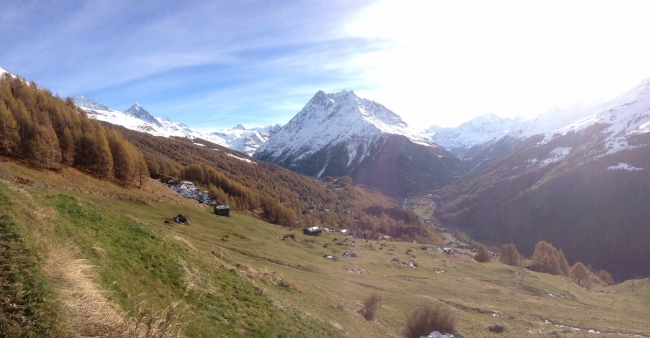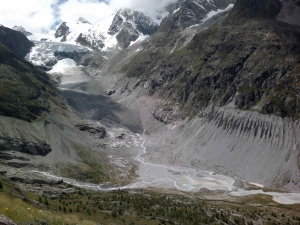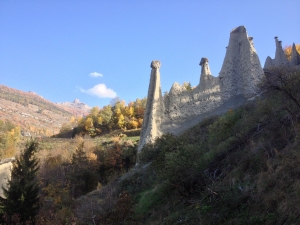Introduction

This site is presented in twelve concise, easy to understand chapters with numerous diagrams, photographs, mini-films and links for further reading. The Val d'Hérens, situated in the heart of the Alps, provides the perfect setting for this voyage into geological time thanks to its abundant geological wealth. Specific examples, some spectacular like the craggy point of the Aiguille de la Tza or the Dent Blanche, are cited throughout the site. Additionally, this site can be used as a support for field trips.
The Val d'Hérens is situated in the heart of the Alps in the Valais Canton in south-western Switzerland. Branching laterally south from the Rhone Valley near Sion, and culminating at the spectacular Dent-Blanche on the Italian border at 4357 metres, this region is rich with geological information and provides for a fascinating case-study.
The Alpine reliefs visible today are the result of glacial erosion, which destroyed the several tens of millions of years (Ma) old pre-existing relief. Moraines, the evidence of glacier passage, create extraordinary landforms when deeply eroded. Recent in geological terms erosion of this type, like landslides and rock fall, is still active today.
This text introduces geological theories such as the formation of the Alpine chain, plate tectonics and metamorphism. And for a better understanding of how these theories are developed, there is a chapter dedicated to the importance of maps and cross-sections.
To understanding these incredible geological changes a rigorous study of geological maps and books is insufficient without the accompanying fieldwork, that is, the study of the terrain. Geologists base their theories on information they 'read' in rocks and rock formations, and other landscape constituents. This text concludes with several field trips in the upper Val d’Hérens.
Rock strata behind the Alpine relief can reveal astonishing secrets like marine animal fossils deposited millions of years ago, in seas that no longer exist. The detection of these rocks enables the reconstruction of tropical sea environments of different depths. The ocean history can be pieced together, from its opening in the midst of continents until its closing, producing mountains such as the Alps.
The formation of mountains takes millions of years. Sedimentary layers are buried and transformed into new rocks; they are deformed, folded and finally brought up to the surface.
This second more in depth reading of the landscape requires some imagination to look further than what is before you in these marvellous landscapes. Numerous diagrams and figures (photo galery) are included to help and guide understanding of these geological notions, with internet links for further reading.
|
|
|


















